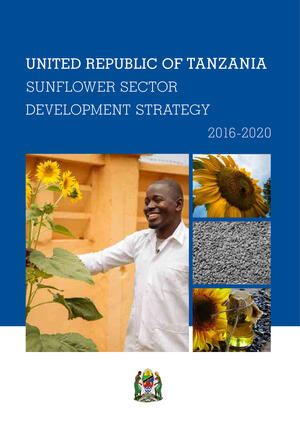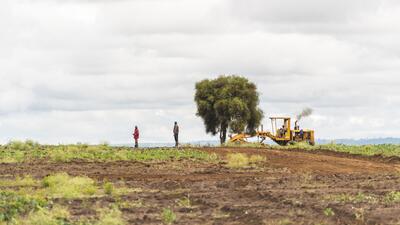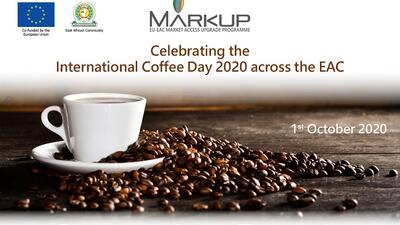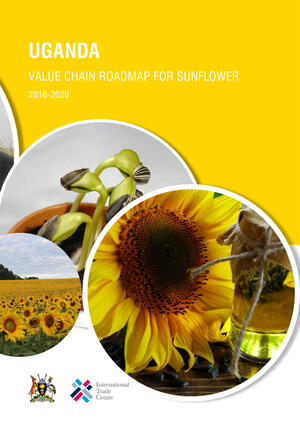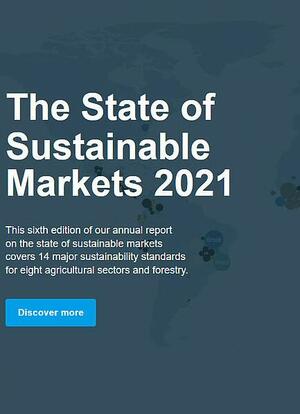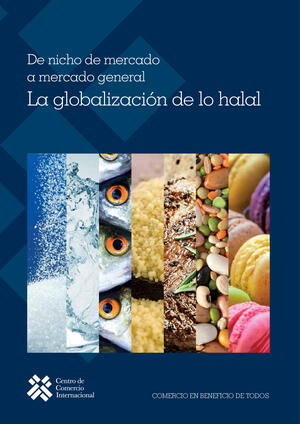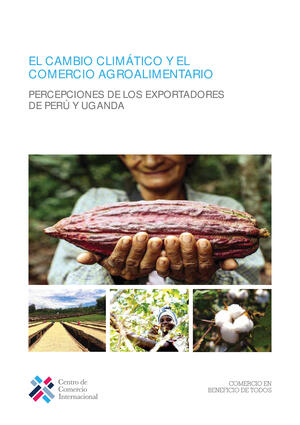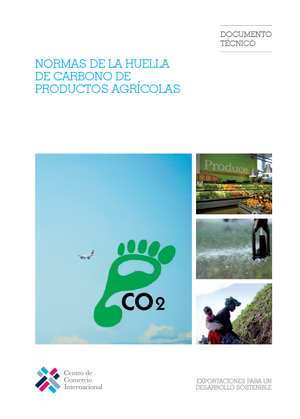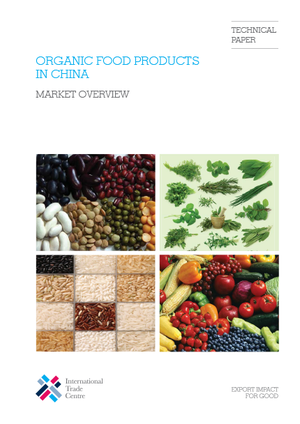Tanzania Sunflower Sector Development Strategy 2016-2020
Global markets for sunflower products
The sunflower value chain encompasses sunflower seeds, oil and cake. The global production of sunflower seed has doubled in the past 20 years, driven by improved yields and expanded acreage. The bulk of sunflower seed produced is used to make sunflower oil, with only 5% of the crop consumed as seeds in bakery, snack food and bird feed applications. Sunflowers were first commercially produced in the Russian Federation and today the largest producers are the Russian Federation (25%), Ukraine (22%) and the European Union (EU) (22%). African countries account for 5.5% of the world’s production, with strong growth experienced in the past decade (2005–2014) in the United Republic of Tanzania, Uganda and South Africa. All sunflower products have experienced rapid, double[1]digit annual growth in exports over the last decade, although cake has experienced the most buoyant growth, at 22% a year since 2005, in comparison to 15% for the sector as a whole. Sunflower oil is the most traded of the products, accounting for two-thirds of the value and the volume of sunflower products traded. Sunflower oil imports have had the fastest growth over the last decade, compared with competing edible oils. The growth in demand for sunflower oil can be attributed to growing consumer awareness and interest in its healthy profile in comparison to other oils and fats. The EU is a crucial market, as a major producer and importer of both seeds and oil, as well as an exporter of oil and processed products. It is also the largest market for sunflower oilseed cake, accounting for 25% of world pro[1]duction and 45% of demand for world production in 2013. However, the overall outlook for oilseed cake demand is not as positive as for seeds and oil, as growth in livestock production is likely to slow, according to the projections of the Food and Agriculture Organization of the United Nations (FAO) (Food and Agriculture Organization of the United Nations (2015) (a). Food Outlook: Biannual Report on Global Food Markets).
The United Republic of Tanzania’s performance
The United Republic of Tanzania has a large, national demand for edible oil. The Rural Livelihood Development Company estimated a minimum national demand of around 330,000 tons of edible oil per annum in 2010, a figure that was expected to increase as consumption rose by 3% annually. Currently more than half of the edible oil consumed is imported. Current data shows that local production of both factory and small-scale extracted oils contributes to about 40% of the national edible oil requirement. The cost of producing sunflower oil in the United Republic of Tanzania is lower than for other oilseed crops (sesame, groundnuts). Additionally, there is an active local market demand for sunflower oil for domestic use as well as demand for the by-product: seed cake for livestock feeding. Due to its economic potential, national production of sunflower has been increasing over the years. Production of sunflower seeds reached close to 1 million tons in 2013, according to the FAO, and 3 million tons according to official statistics from the Ministry of Agriculture, Livestock and Fisheries (MALF). Yields have increased dramatically over the last decade and are now seven times the level they were at a decade ago. Overall, for all sunflower products (seeds, oil and cake), the United Republic of Tanzania has experienced a major surge in exports, moving from US$1 million to over US$70 million within a decade. India is its main export market and absorbs over 80% of its exports. Despite the world market for sunflower products experiencing extraordinary growth of 15% over the last decade, the United Republic of Tanzania managed to outperform the world market by reaching 50% average annual growth, albeit from a low base. During the past decade, the United Republic of Tanzania’s market share in world trade rose from 0.04% in 2005 to 0.24% in 2010, and 0.49% by 2014. The analysis of the production and export data reveals a number of key underlying trends. These include:
Fast growth, particular for sunflower cake;
Outperformance of world markets in all sunflower products;
Strong concentration of exports in the Indian market at the expense of regional markets, indicating opportunities for diversification;
A need to increase intensification of refined oil exports.




